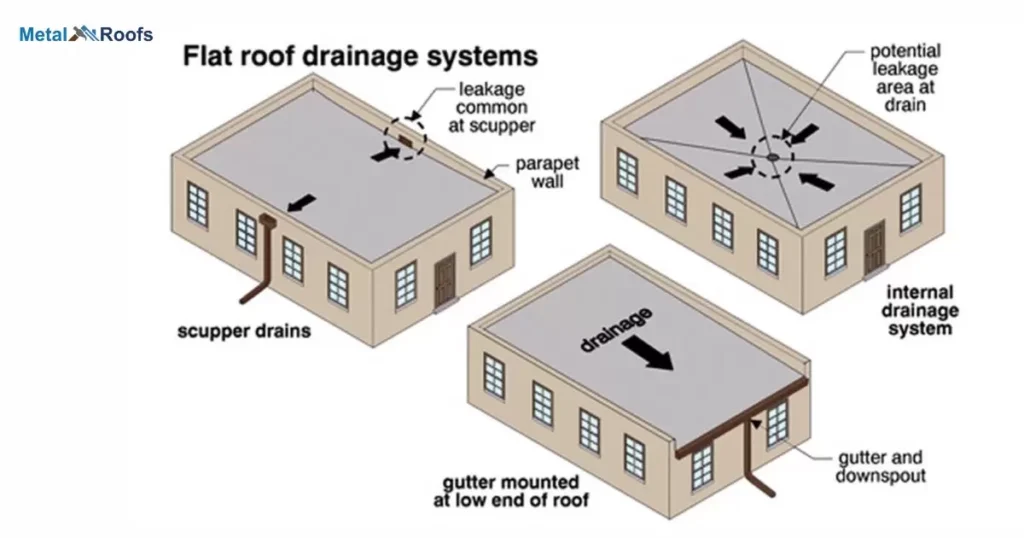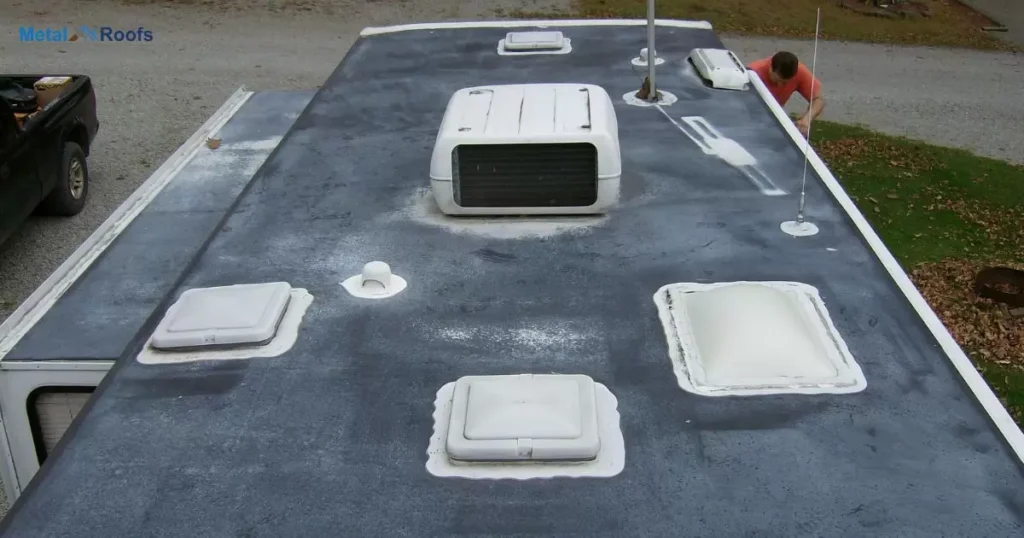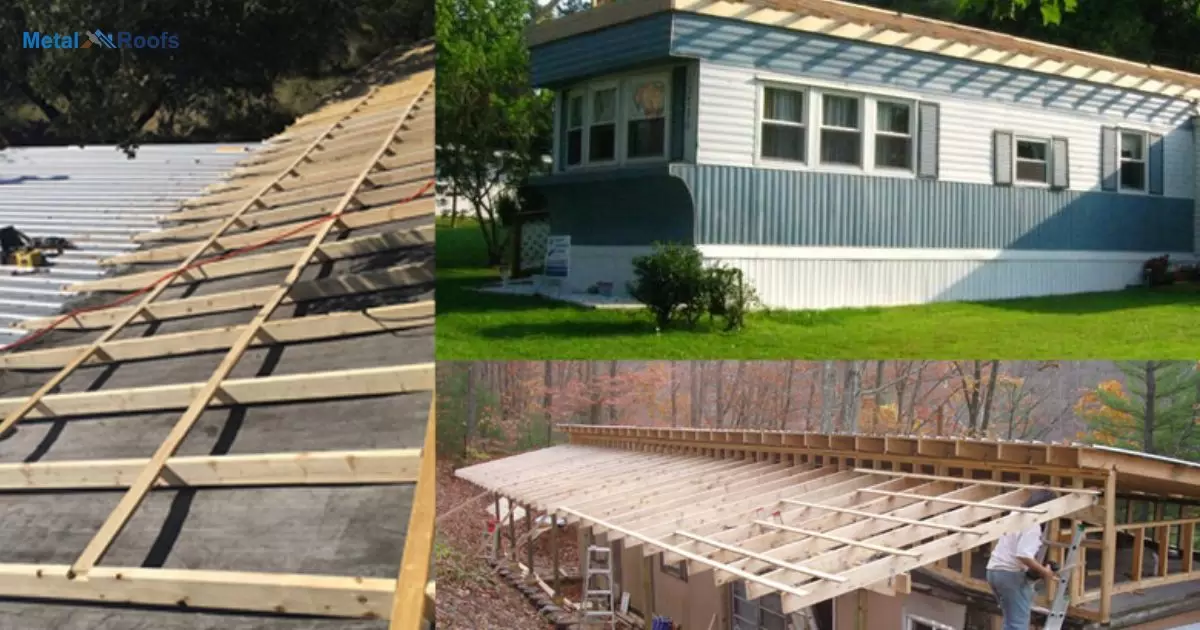A mobile home roof covers the top. It shields from rain and sun. It can be metal or rubber. It keeps the home dry and cool. Roof vents help airflow. Regular checks prevent leaks. A good roof lasts a long time.
A leaking mobile home roof can be a big problem. Fixing it is simpler than you think. Learn how to repair a mobile home roof. Keep your home safe and dry.
First, find the leak on your roof. Clean the area around it well. For effective Do It Yourself RV Roof Repair, apply a sealant or patch to fix the leak. Smooth the patch for a tight seal. Check your work to ensure no leaks.
Key Takeaways
- Inspect your roof for cracks or holes to address leaks early.
- Select metal, rubber, or shingle roofing based on your needs.
- Ensure proper drainage and support to maintain roof shape and function.
- Adding a new layer can be a cost-effective way to improve protection.
- Replacement costs vary by material and home size; get multiple quotes.
- Routine checks and prompt repairs help prevent major issues and extend roof life.
Types of Mobile Home Roofing
Mobile home roofing can come in various materials and styles, each offering different benefits in terms of durability, cost, maintenance, and energy efficiency. Here are some common types of mobile home roofing:
Metal Roofing
Materials: Aluminum, steel, or tin.
Pros: Durable, long-lasting, fire-resistant, lightweight, energy-efficient (reflects heat), and low maintenance.
Cons: Can be noisy during rain or hail, and may dent easily.
Asphalt Shingles
Materials: Asphalt, fiberglass, or organic materials.
Pros: Affordable, easy to install, widely available, and comes in various colors and styles.
Cons: Shorter lifespan compared to metal or rubber roofs, susceptible to wind damage, and may require more maintenance.
Rubber Roofing (TPO or EPDM)
Materials: Thermoplastic Olefin (TPO) or Ethylene Propylene Diene Monomer (EPDM).
Pros: Lightweight, durable, energy-efficient (reflects UV rays), and low maintenance.
Cons: Can be more expensive than asphalt shingles, and may require professional installation.
PVC Roofing
Materials: Polyvinyl Chloride.
Pros: Durable, energy-efficient, fire-resistant, and low maintenance.
Cons: Higher cost, and may require professional installation.
Composite Roofing
Materials: A blend of various materials like asphalt, fiberglass, and recycled materials.
Pros: Durable, aesthetically pleasing, available in various styles and colors, and can be eco-friendly.
Cons: Can be more expensive than asphalt shingles, and may require professional installation.
Insulated Roof Panels
Materials: Metal or other materials with an insulated core.
Pros: Provides excellent insulation, energy-efficient, durable, and low maintenance.
Cons: Higher initial cost, and may require professional installation.
Flat Roof Coating
Materials: Various coatings like acrylic, silicone, or elastomeric.
Pros: Can extend the life of the existing roof, energy-efficient (reflective coatings), and relatively easy to apply.
Cons: May require regular reapplication, and not suitable for roofs with extensive damage.
When choosing a roofing material for a mobile home, it’s important to consider factors such as climate, budget, and the specific needs of the home. Each type of roofing material has its own advantages and disadvantages, so it’s essential to weigh these factors carefully to make the best decision.
Solutions for Flat and Bowed Roofs

Flat roofs need good drainage to prevent water pooling. Use sealants and coatings to stop leaks. Bowed roofs need support beams and braces to keep their shape. Regular checks and fixes keep these roofs strong. Adding a new layer can boost protection.
Repair and Seal
First, find any leaks or cracks on your roof. Clean the area to remove dirt and old sealant. Apply a new sealant or patch over the damage. Smooth it out to ensure a tight seal. Check for leaks after it dries.
“Roof Over” Solutions
A roof over can protect and add layers. Install a new roof over the old one. Seal the edges to prevent leaks. This method is quick and cost-effective. It keeps your home dry and secure.
Solutions for Peaked Roofs
Peaked roofs need strong support to stay stable. Fix any leaks with sealant or patches. Ensure proper drainage to avoid water buildup.
Regularly check for damaged shingles or tiles. Reinforce the roof as needed to maintain its shape.
How Much Does a Mobile Home Roof Replacement Cost?
The cost of replacing a mobile home roof can vary widely based on several factors, including the size of the roof, the type of material used, and the complexity of the job. On average, you might expect to pay between $2,000 and $6,000 for a mobile home roof replacement.
Here’s a rough breakdown of the costs for different roofing materials:
- Metal Roofing: $3,000 – $6,000
- Rubber Roof (EPDM): $2,500 – $4,500
- Asphalt Shingles: $3,000 – $5,000
- Built-Up Roof (BUR): $4,000 – $6,000
Labor costs and any additional work needed (like repairing underlying damage) can also influence the total cost. Getting quotes from a few contractors and comparing them will give you a better idea of the price in your area
Mobile Home Roof Leaks?

Mobile home roof leaks can lead to serious damage if not fixed quickly. Start by inspecting the roof for visible cracks or holes. Pay special attention to areas around vents, skylights, and seams. Water often finds its way in through these weak spots.
Once you find the source, apply a high-quality roof sealant to cover the leaks. Make sure the area is clean and dry before applying the sealant. If the damage is extensive, you might need to patch or replace sections of the roof. Regular maintenance helps prevent leaks from becoming major issues.
Frequently Asked Questions
How to fix a hole in a mobile home roof?
Clean the area around the hole and apply a roof patch or sealant. Ensure it’s dry and smooth the edges for a tight seal.
How to repair the roof of a trailer?
To repair a trailer roof, first clean the area and find the leak. Apply a suitable sealant or patch to fix it and ensure it’s fully sealed.
How do you put a rubber roof on a mobile home?
To put a rubber roof on a mobile home, clean the surface and apply a primer. Then, roll out the rubber membrane and seal the edges with adhesive.
Conclusion
Maintaining a mobile home roof is crucial for protection and longevity. Regular checks and timely repairs prevent leaks and damage. Choose the right roofing type for your needs and climate.
When dealing with flat or peaked roofs, ensure proper support and drainage. Apply sealants and patches as needed to address leaks. For a roof over solution, adding a new layer can be effective.
Replacing a roof can vary in cost based on materials and size. Get multiple quotes to find the best option. Proper care and maintenance keep your mobile home safe and dry.











